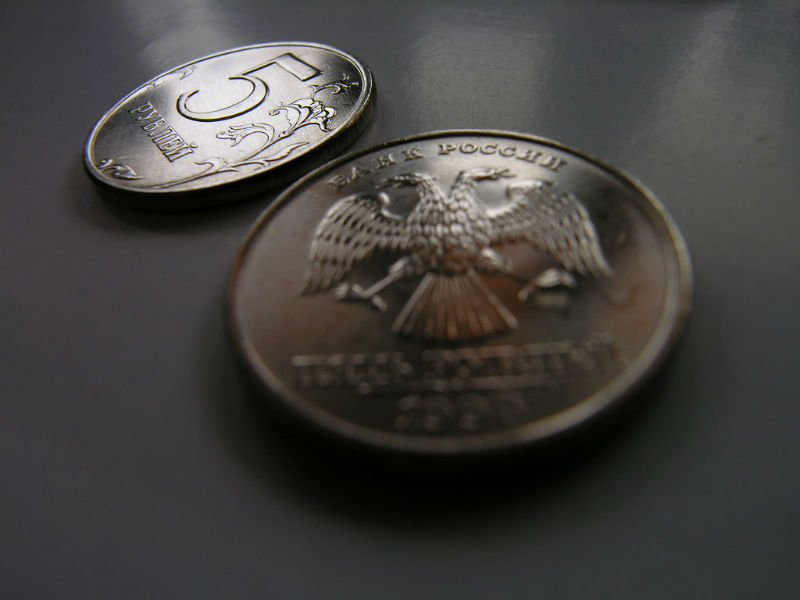Overview: what determines the growth or fall of the ruble

Image: Waltie | CC BY 2.0
In the past few months, the ruble has been quite stable against the dollar. Moreover, even in such a situation, there are fluctuations - for example, in April the rate grew, and in May for the first time in a long time it fell. Why it happens? I have collected in one material factors that affect the Russian currency, both in plus and minus.
Note : the purpose of the material is not to give a hint on how to make money on fluctuations, but rather to help avoid unnecessary losses due to unexpected fluctuations that could easily be foreseen.
Ruble weakening factors
Let's talk about what can affect the stable reduction in the value of the national currency of Russia. There are several such factors, each of them arises annually.
Decrease in foreign currency export earnings
According to open statistics, from the beginning of the second to the end of the third quarter, it is traditionally possible to observe a decrease in energy exports. This is logical - in Europe, mainly buyers of this Russian product, it becomes warm.
Here's how financial analysts describe the impact of this factor:
"The slowdown in the flow of export earnings leads to a decrease in the current account from the export of goods over this period, which, in turn, slows down the growth of funds in correspondent accounts of Russian banks and foreign currency corporate deposits and, as a result, affects short-term foreign currency liquidity."
Dividend payout season
Traditionally, at the end of spring-summer there is a season of dividend payments of Russian companies. In the world ranking in terms of payments in 2018, Russia entered the top ten, catching up with Switzerland. At the same time, in the ranking for emerging markets, our country yielded only to China, remaining in second place.
According to statistics, up to 77% of dividend payments are made by Russian exporting companies. Most of the payments go in June, they are approximately equally divided into July and August. For the ruble, this has a negative effect, because investors convert rubles received as dividends into dollars.
Activity of the Ministry of Finance
It is no secret that the authorities can somehow influence the exchange rate of the Russian currency, for example, through so-called interventions, that is, purchases of foreign currency on the domestic market. In May of this year, the volume of such purchases amounted to 300.5 billion rubles. The more currency the agency buys for rubles, the more its rate rises, and the price of the ruble decreases.
It is clear that this factor can also influence the strengthening of the ruble, however, since this spring the activity of the Ministry of Finance became a factor of its weakening, we will put this item in the section of factors of decline.
What supports the ruble exchange rate
Now let's talk about what factors positively affect the price of the Russian currency. There are several of them too.
Taxable period
One of the important factors that contribute to the strengthening of the ruble is the tax period, when companies must pay taxes. For exporters, this means the need to sell part of the foreign exchange earnings in order to receive rubles and pay taxes.
External factors
In addition to local factors , there are external factors in favor of strengthening the ruble. An absolute factor in the reduction or strengthening of the ruble price has always been oil prices. Today they remain at a fairly high level, and this maintains the price of the ruble.

Data: RBC
In addition, traditionally the Russian currency reacts to foreign policy events, such as the imposition or postponement of regular sanctions.
Also, according to analysts, there is such a factor as global demand for risky assets - investments in the economies of developing countries traditionally also belong to them. When traditional markets do not grow rapidly, investors are interested in more risky investments. At such moments, the desire to earn money may outweigh the remaining disadvantages, such as insecurity of capital, etc.
A retrospective analysis suggests that all the factors that we mentioned affect the ruble exchange rate in certain periods.

A source
January and August are the worst months for the ruble
Traditionally, it is during these two months that the ruble shows the worst results. At the end of winter, holidays in the country become an additional negative factor for the ruble - many people plan vacations abroad and buy foreign currency. In addition, often all negative factors are put together in August, even if it is possible to avoid external negative influences.
